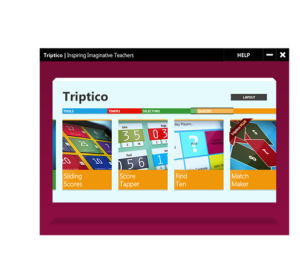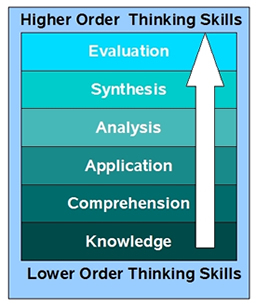In June I had the pleasure of attending the annual EBEA conference at the East Midlands Conference Centre in Nottingham. One of the most striking things about this year’s conference was the emphasis on collaboration. Delegates were keen to get stuck into each workshop that they attended and share their own brilliant ideas about how they approach their teaching practice. One common theme that I noticed across the maelstrom of collaborative discussion taking place was the willingness to embrace technology.
I suspect this may be a side effect of many of us being forced to make up a teaching timetable with the delivery of some ICT lessons, or it may simply reflect the fluid nature of our subject matter and its relevance to current events? Regardless of the reasons behind this change it is undoubtedly the case that many in the Business and Economics teaching community are right in the vanguard of pedagogues willing to embrace technology and take risks.
Below is just a selection of the many wonderful ideas that were shared at the conference.
 Thanks go to Keith Hirst and Andrew Redfern who introduced us to this little gem in their workshop. Socrative is a student response system that allows teachers to set educational exercises and games for students to complete via smart phones, tablets or laptops. It is unbelievably easy to use and the website contains a good instructional video that explains some of the different ways in which Socrative can be utilised. I have already started using it with my classes and the students have found it extremely simple to grasp.
Thanks go to Keith Hirst and Andrew Redfern who introduced us to this little gem in their workshop. Socrative is a student response system that allows teachers to set educational exercises and games for students to complete via smart phones, tablets or laptops. It is unbelievably easy to use and the website contains a good instructional video that explains some of the different ways in which Socrative can be utilised. I have already started using it with my classes and the students have found it extremely simple to grasp.

Popplet is a brilliant little piece of mind mapping software that I use on a regular basis with my students. It takes seconds for them to sign up and it couldn’t be simpler to use.
The technology allows you to easily create colourful mind maps as well as draw or insert photos into the mind maps to enhance the overall impact. Students can also collaborate on the same Popplet by hitting the Share button. The mind map saves automatically and students can return later and add additional content, building a map of their learning over the course.
 Scoop.it! is a superb website that enables you to easily ‘scoop’ content from webpages and place it into a ‘virtual magazine’ that can then be shared with students. Upon signing up to the website there are clear instructions on how to insert a handy button onto your toolbar that allows you to ‘scoop’ content quickly and efficiently with just the click of a button. You are provided with a link to you page which can then be emailed to students. You can also stimulate discussion underneath each scoop in a handy comments section.
Scoop.it! is a superb website that enables you to easily ‘scoop’ content from webpages and place it into a ‘virtual magazine’ that can then be shared with students. Upon signing up to the website there are clear instructions on how to insert a handy button onto your toolbar that allows you to ‘scoop’ content quickly and efficiently with just the click of a button. You are provided with a link to you page which can then be emailed to students. You can also stimulate discussion underneath each scoop in a handy comments section.
 Quizlet is a free website that provides a learning platform for students that includes flashcards, multiple choice, matching and true/false quizzes. You start by creating your own set of key term definitions. Once you have completed these Quizlet does the rest and will automatically jumble these key terms up to create a variety of tests for students to complete.
Quizlet is a free website that provides a learning platform for students that includes flashcards, multiple choice, matching and true/false quizzes. You start by creating your own set of key term definitions. Once you have completed these Quizlet does the rest and will automatically jumble these key terms up to create a variety of tests for students to complete.
Go! Animate is a great little website that allows students and teachers to create mini cartoon animations. Choose your background and main characters and then start to write their dialogue. This resource is particularly useful for those Friday afternoon lessons as an alternative to a handwritten or typed exam question. Simply ask the students to type their response into the dialogue boxes and get the characters to speak their words! You can also create your own videos and these can be saved and accessed later as a handy revision resource.
 Jing is a piece of free software that allows you to make live recordings directly from your laptop screens. Plug in a microphone and you can also record a voiceover at the same time. Once completed, this mini-video can then be easily exported as a Flash file, which the students can access at their convenience. I find it particularly useful when teaching diagrams in economics as it gives the students a visual and verbal description which they can refer back to at a later date as a revision resource. It is also particularly if you are planning to ‘flip’ your classroom.
Jing is a piece of free software that allows you to make live recordings directly from your laptop screens. Plug in a microphone and you can also record a voiceover at the same time. Once completed, this mini-video can then be easily exported as a Flash file, which the students can access at their convenience. I find it particularly useful when teaching diagrams in economics as it gives the students a visual and verbal description which they can refer back to at a later date as a revision resource. It is also particularly if you are planning to ‘flip’ your classroom.
http://www.techsmith.com/jing.html
Thanks go to Kirk Dodds and Ben Cox for introducing us to this little beauty in their workshop. Triptico is a superb piece of software that can easily be downloaded to your desktop. It is literally a treasure trove of interactive resources that work well on a range of technologies. At the moment I am enjoying using it through my interactive whiteboard running some of the interactive games which Triptico provides templates for.
Please feel free to leave your own suggestions for new technologies in the comment section.










